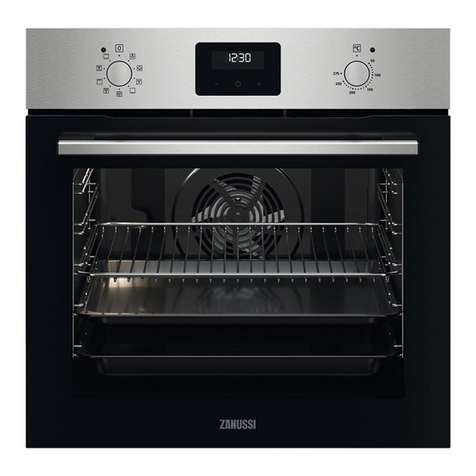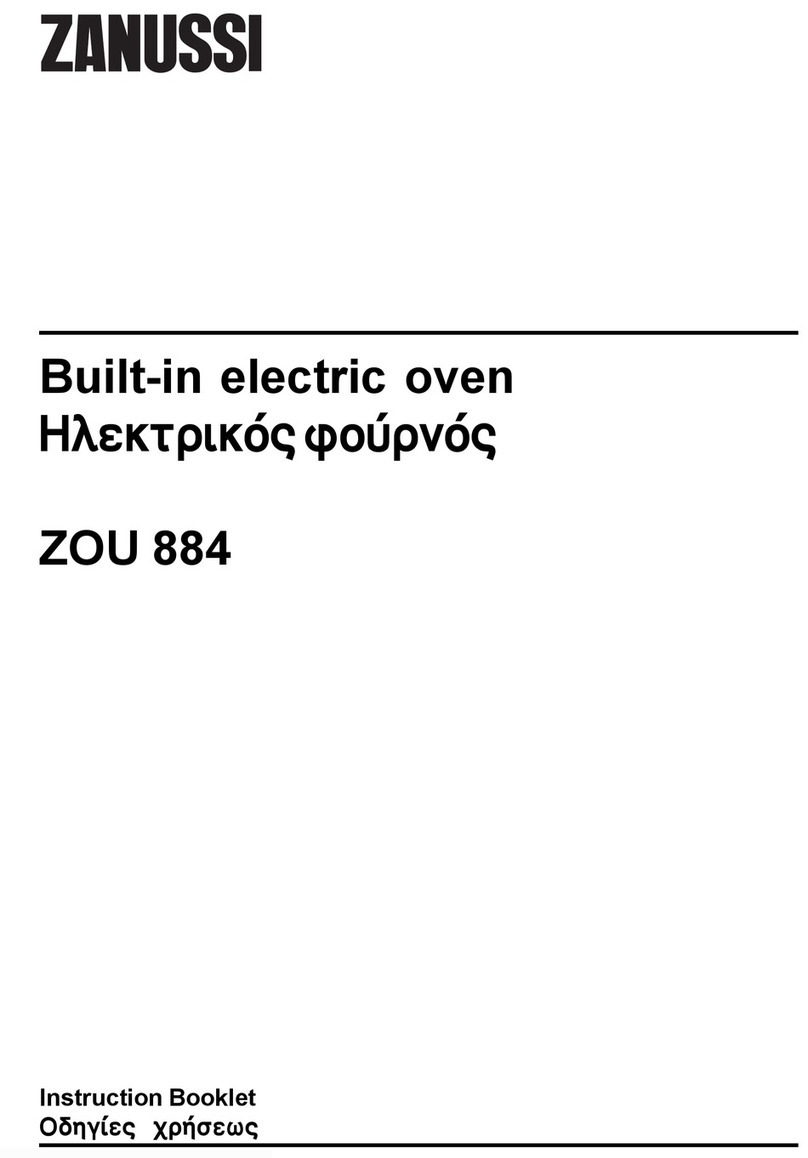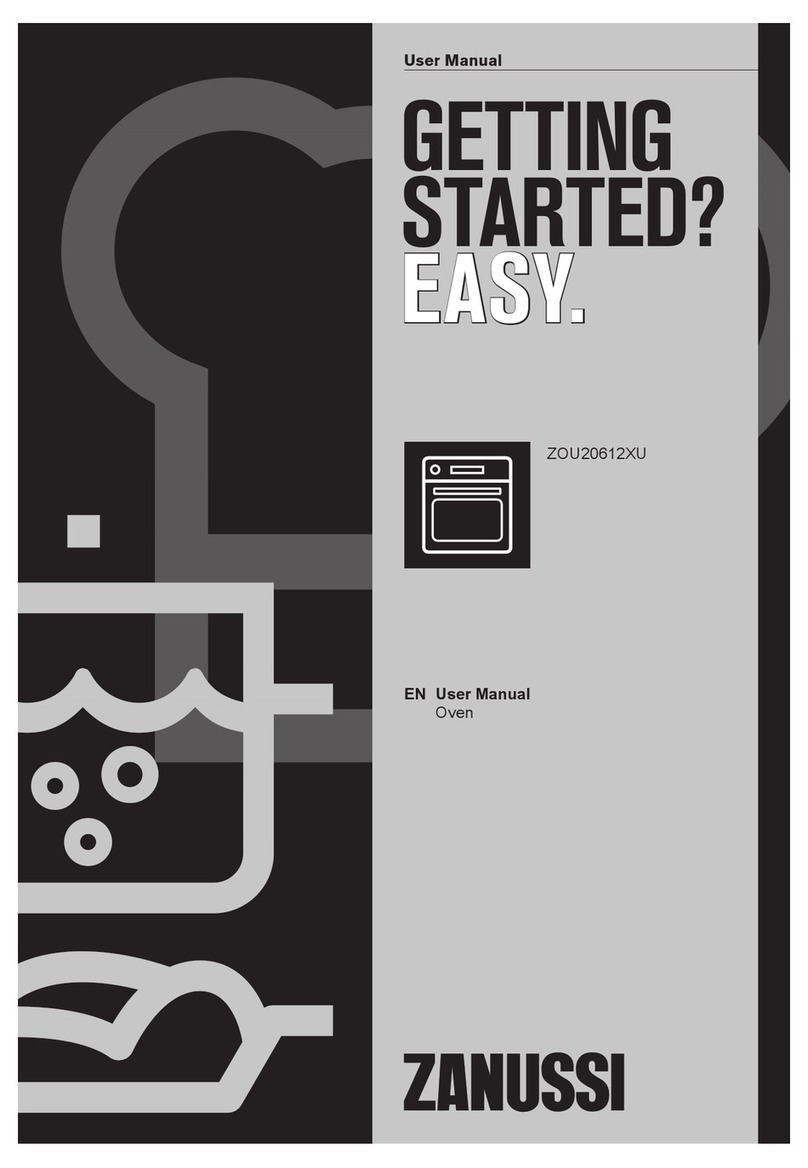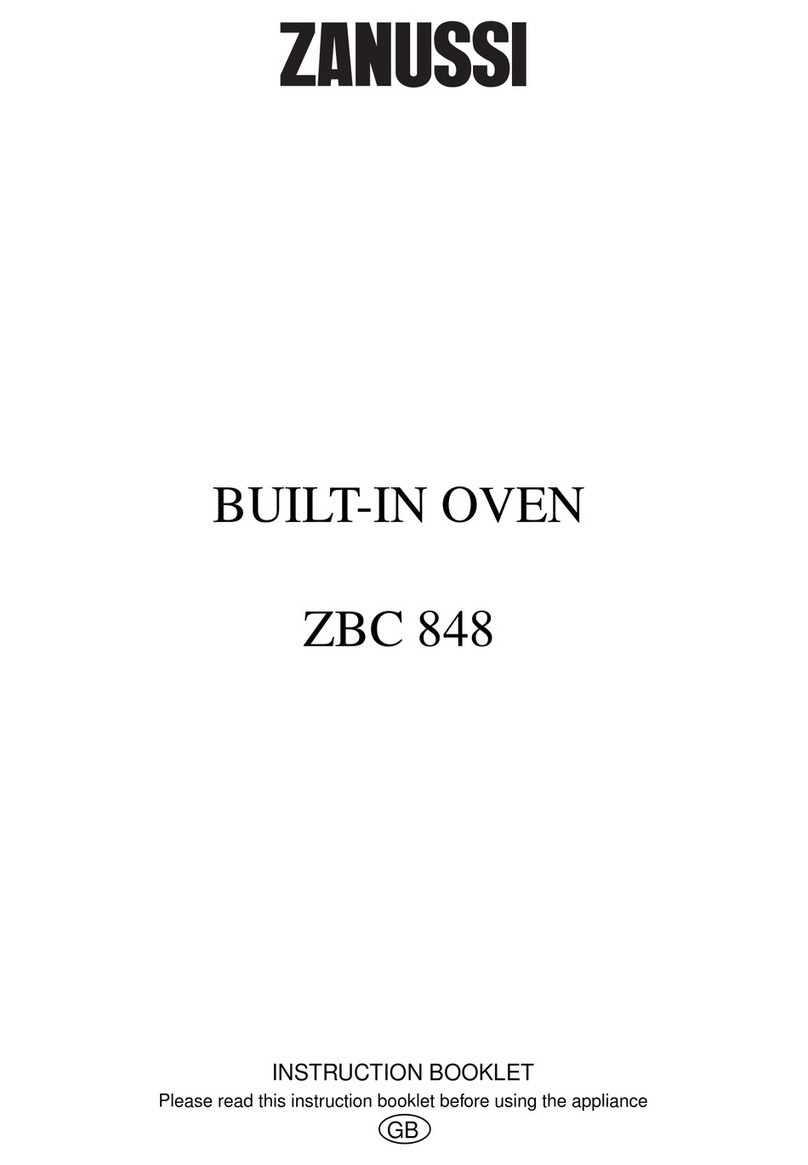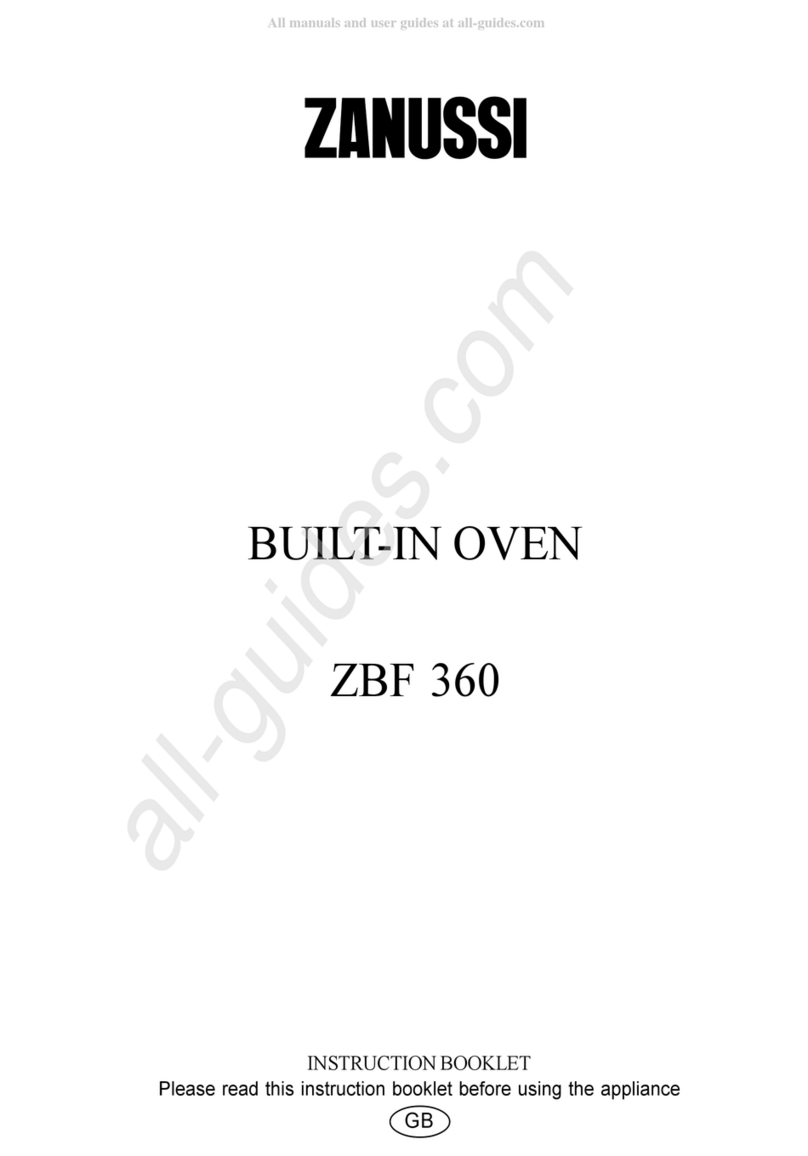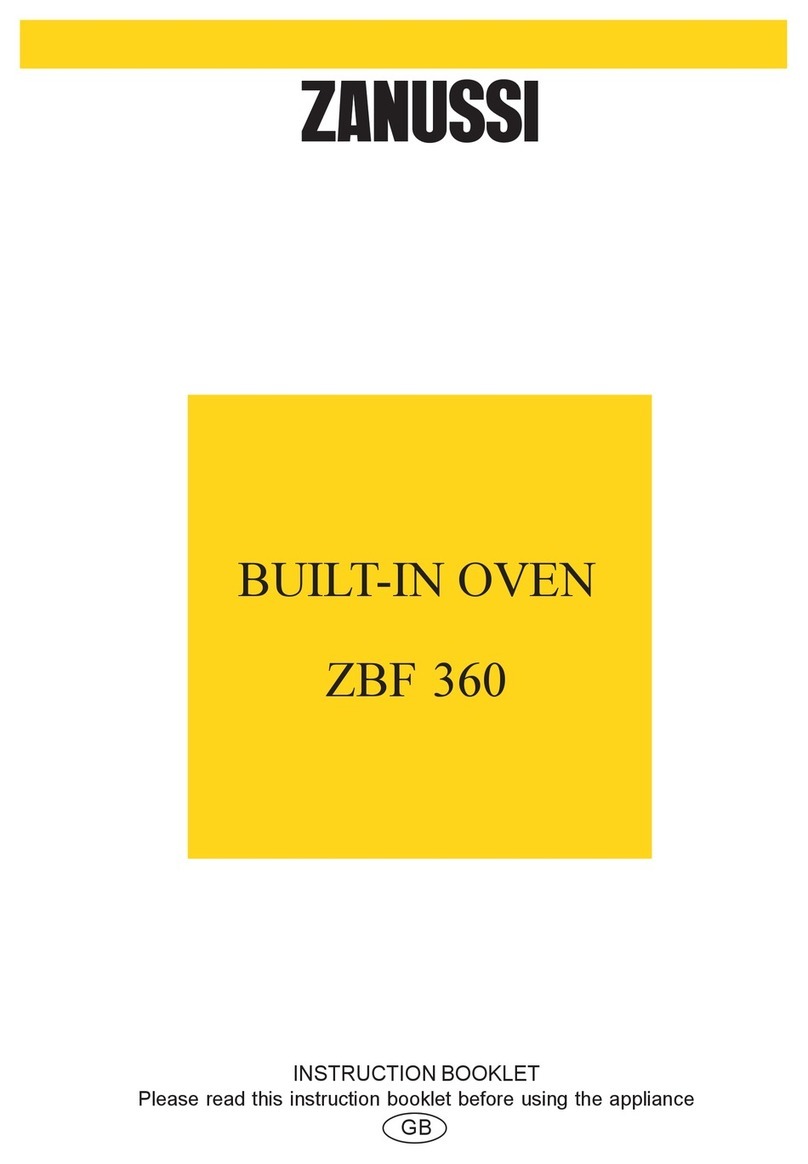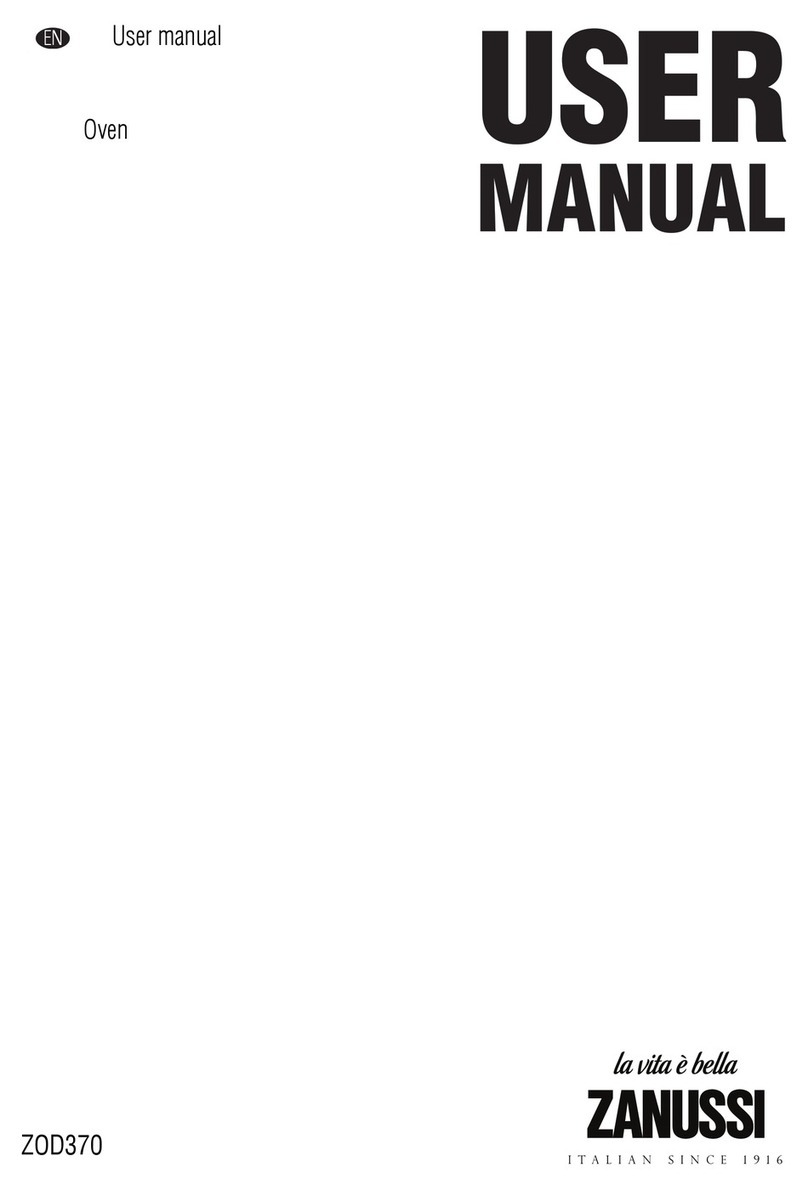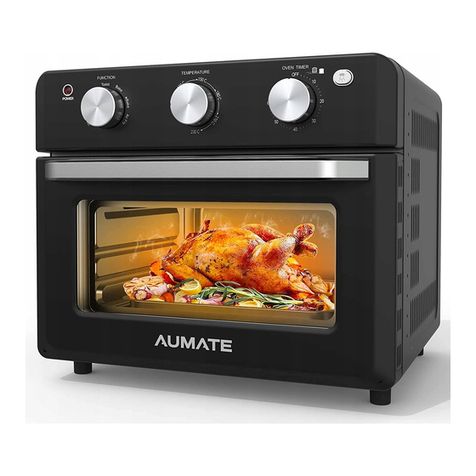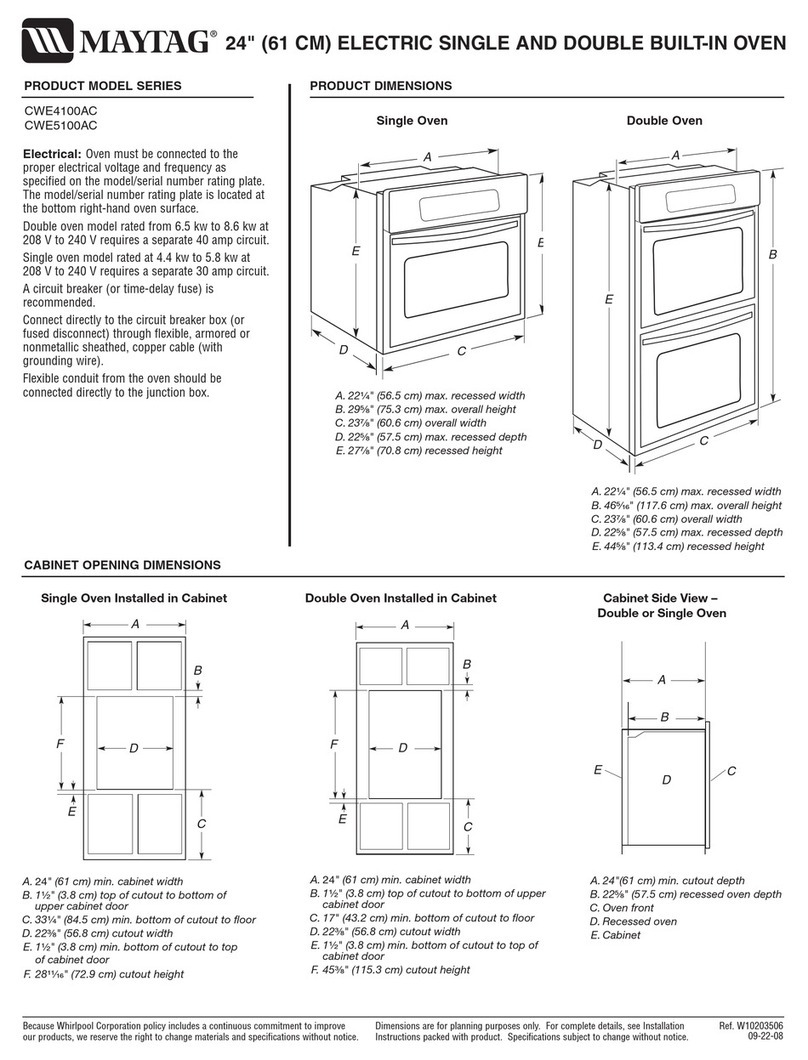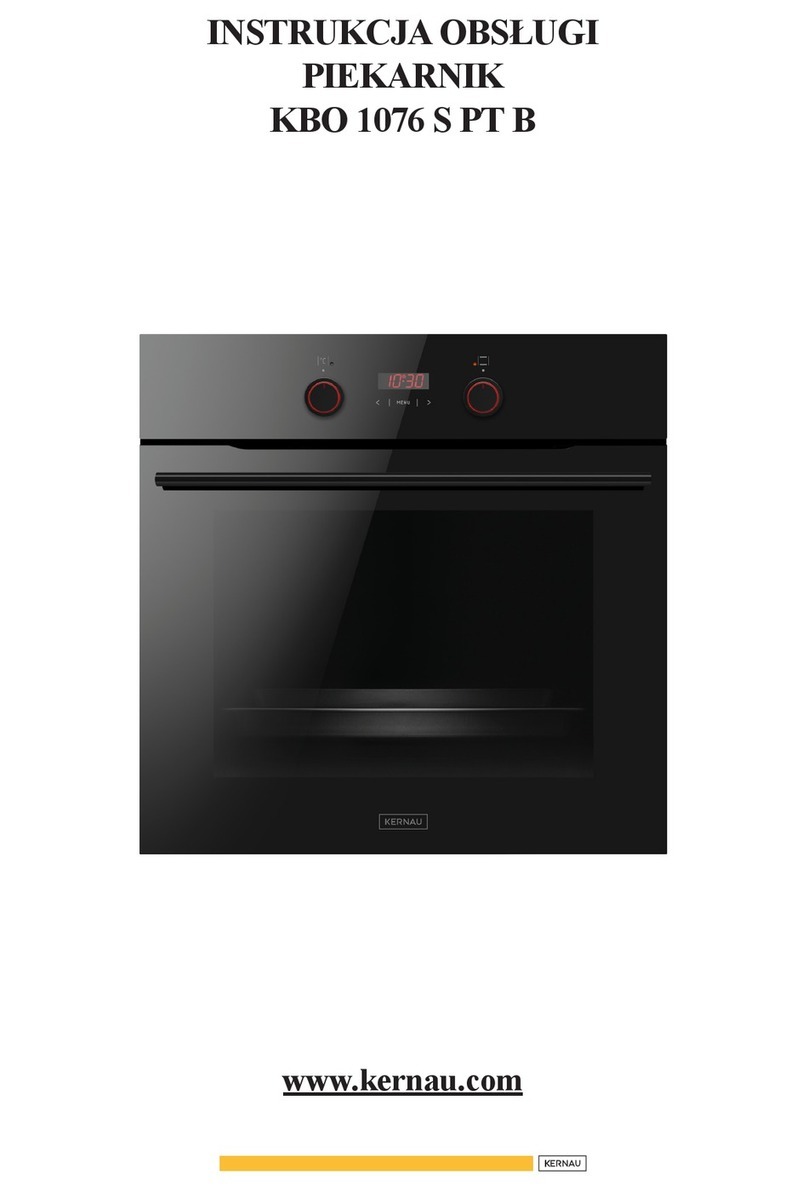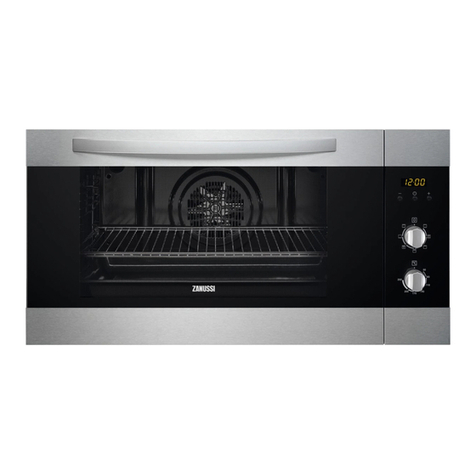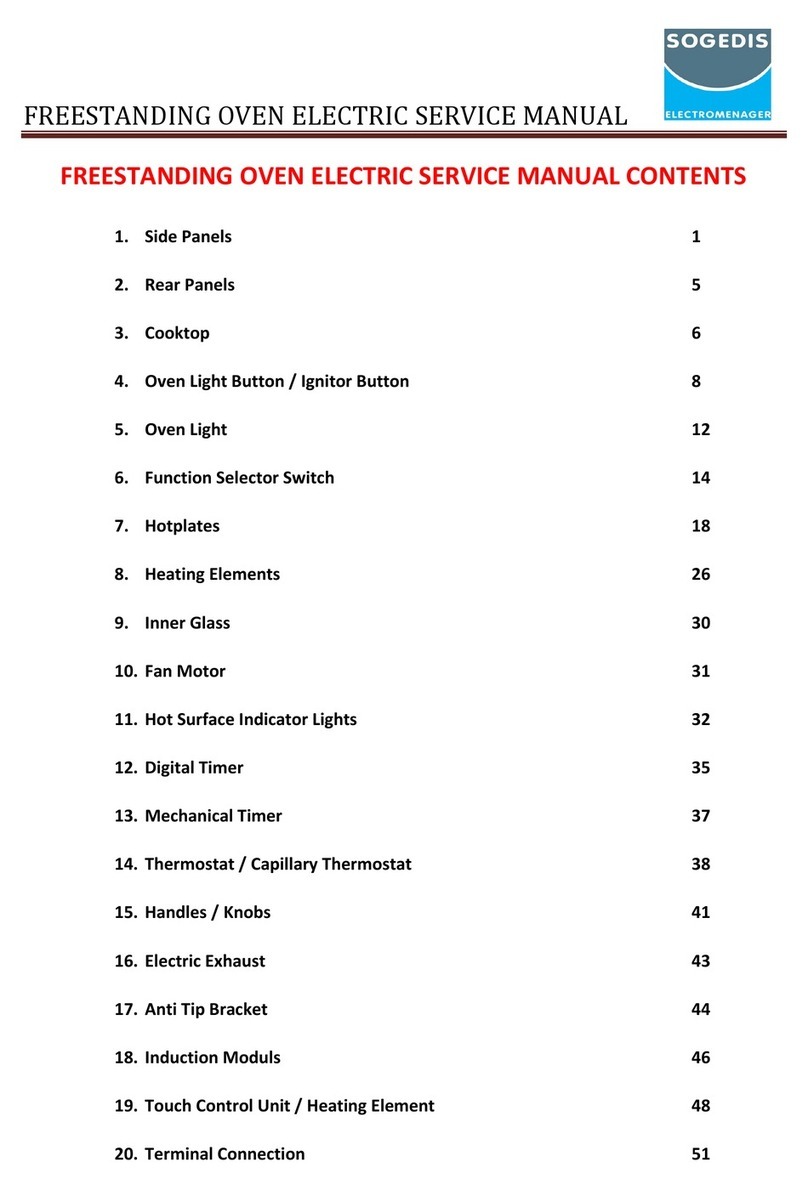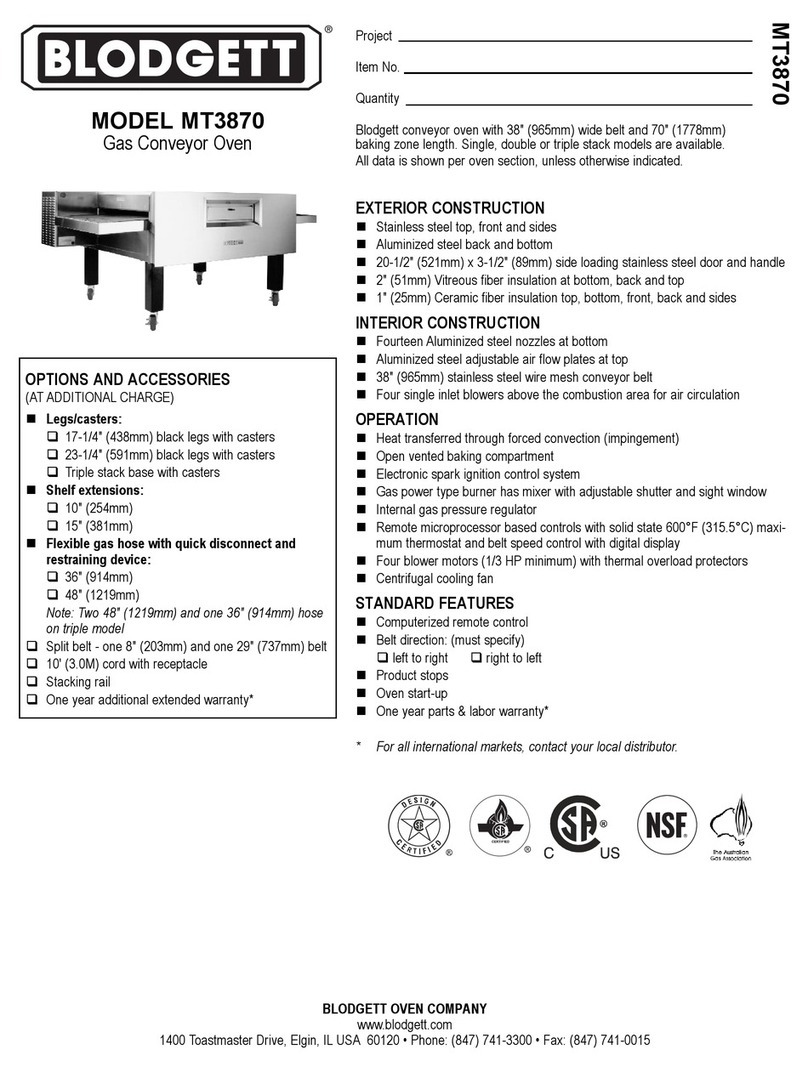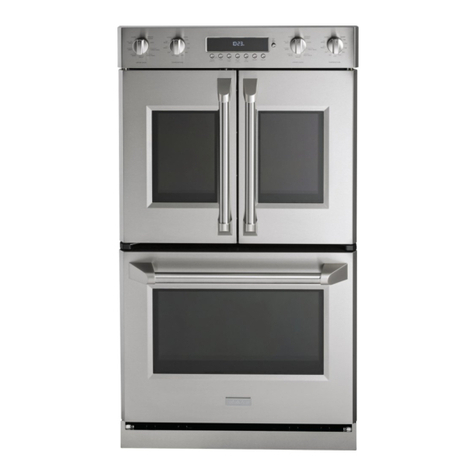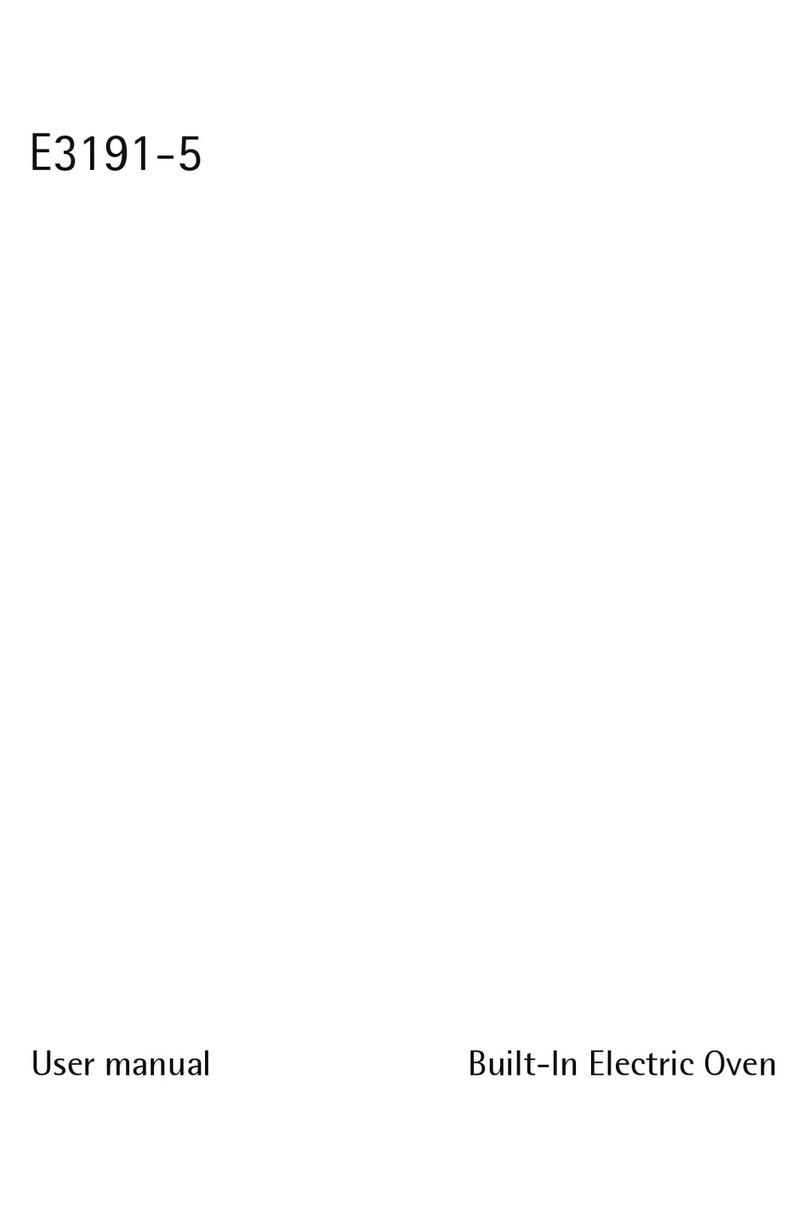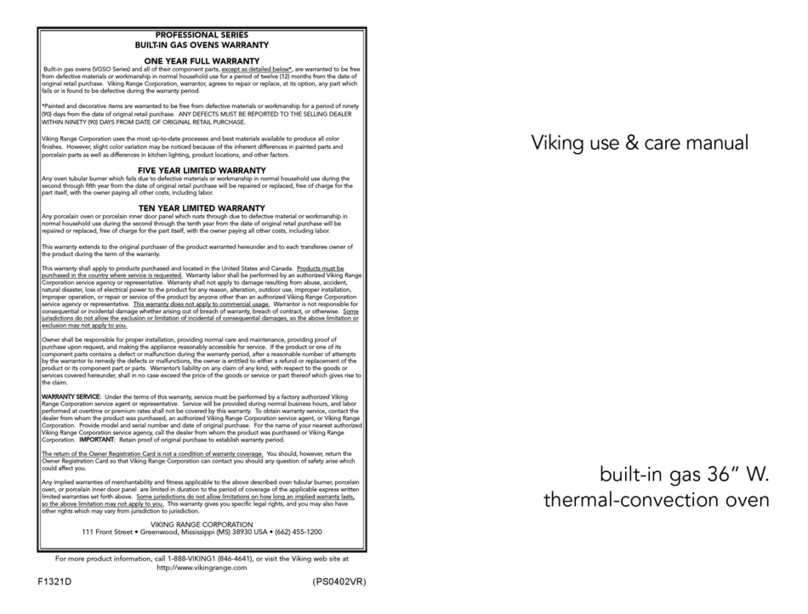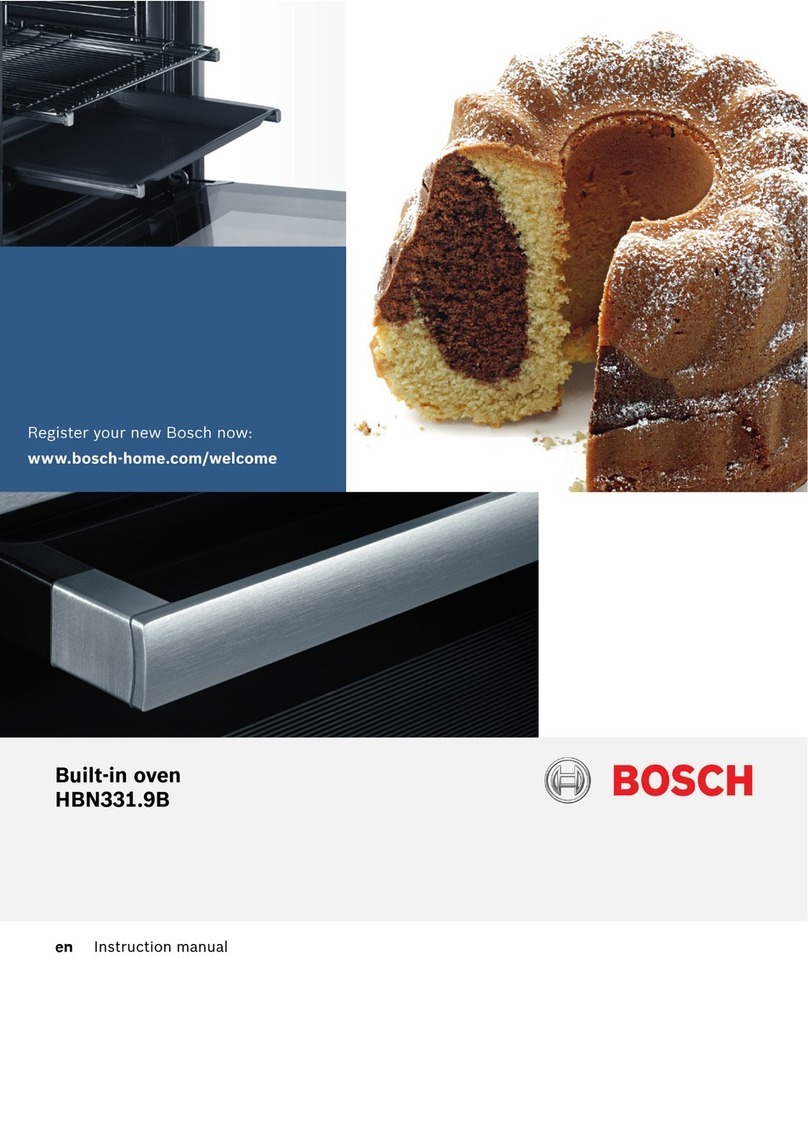7
Conventional cooking
Heat comes from the top and from the bottom,
therefore it is preferable to use the central
runners. If cooking requires more heat from
the top or from the bottom use the top or the
bottom runners.
Grilling
When grilling meat or fish, spread a little oil
on them and always place them on the oven
grid. The shelf level depends on the
thinckness of the food.
Always place the dripping pan at the lowest
level, with some water in it, to avoid smoke
and unpleasant smells.
Some hints
For baking cakes
Cakes require a moderate temperature
(normally between 150 and 200 °C). In
addition, the oven must be heated up
beforehand - for about 10 minutes.
The oven door should not be opened before at
least 3/4 of the set cooking time is up.
Normal short pastry dough should be cooked
in a mould or tin for 2/3 of total cooking time
required and then garnished as desired before
being cooked completely.
Clearly, the remaining cooking time depends
on the type of garnish used (jam, fruit, etc.).
Care should be taken to ensure that any dough
and cake mixes are of the right consistency
since an unduly moist mix lengthens cooking
time unnecessarily. The raw dough or mix
should therefore be fairly difficult to detach from
the spoon or beater.
For cooking meat and fish
Meat cooked in the oven should weigh at least
1 kg to prevent it from becoming too dry dur-
ing cooking. Very tender red meat to be cooked
rare, i.e. well cooked on the outside but
extremely juicy inside, requires
high-temperature cooking (200-220 °C).
White meat, poultry and fish instead require
low-temperature cooking (150-175 °C).
The ingredients for the accompanying sauce
or gravy should be put in the baking pan at the
very beginning only when cooking times are
short.Otherwise they should be added during
the last half hour. A simple way of checking
whether meat is done or not is to press it with
a spoon; if the meat does not yield under this
pressure it means that it is done to a turn. In
the case of roast beef and fillet steaks, the
inside of which should remain fairly pink in
color, cooking times must be short. The meat
can be cooked in a baking pan or else directly
on the shelf - in this case a dripping pan must
obviously be placed underneath the shelf to
collect the juice. Once the meat is cooked, it
is advisable to let it rest for at least 15 minutes
before carving so that the juice does not seep
out. To prevent the formation of too much
smoke in the oven during roasting, it is a good
idea to pour a little water into the dripping pan
andto prevent steamto add a little bit more
Hints and tips for using the oven
Alwa s cook with the oven door
closed.
The oven is supplied with an exclusive system
which produces a natural circulation of air
and the constant recycling of steam.
This system makes it possible to cook in a
steamy environment and keep the dishes soft
inside and crusty outside. Moreover, the
cooking time and energy consumption are
reduced to a minimum. During cooking steam
may be produced which can be released when
opening the oven door. This is absolutely
normal.
However, alwa s stand back from the
oven when opening the oven door during
cooking or at the end of it to allow an
build up of steam or heat to release.

